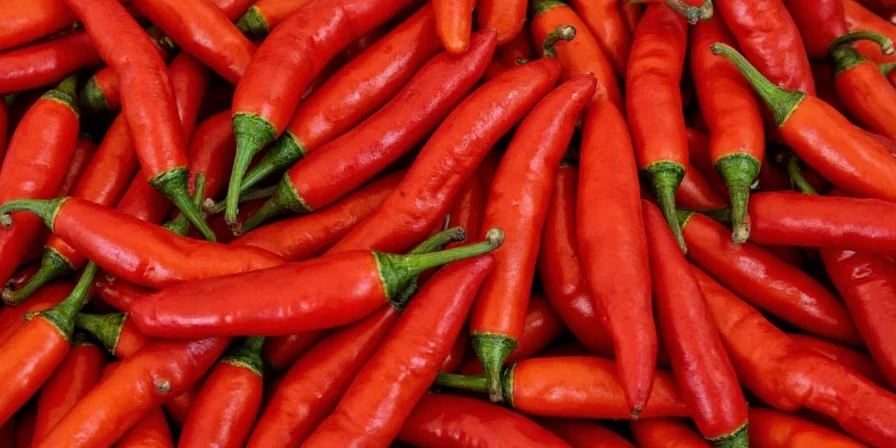The Habañero Chronicles: From Fiery to Flavorful in 10 Scorching Tips!
Table of Contents
- Intro: Why Habañeros Rule the Heat Charts
- Habañero on the Heat Scale: Just How Spicy Are We Talking?
- A Pepper With a Past: The Historical Roots of Habañero
- Habañero Around the World: A Global Spice Journey
- 10 Practical Tips for Handling Habañeros Like a Pro
- Beyond Heat: Culinary Uses That’ll Make Your Taste Buds Sing
- Pepper Safety: Don’t Burn Yourself Out
- Habañero Myths Busted: Separating Fact From Flare
- Pairing Habañero With Other Ingredients: A Flavor Matchmaking Guide
- Conclusion: Habañero—More Than Just a Kick
Intro: Why Habañeros Rule the Heat Charts
Picture this: you take a bite of a salsa that promises “mild,” but suddenly your mouth feels like it’s hosting a bonfire party. Chances are, the culprit was a sneaky habañero. Known as the crown jewel of chili peppers, the habañero is not just about heat—it's a complex flavor bomb with centuries of history.

Habañero on the Heat Scale: Just How Spicy Are We Talking?
Let’s start with the basics—the Scoville scale. If you're unfamiliar, this is the measuring stick used to rate the spiciness of chili peppers. The habañero clocks in anywhere between 100,000 to 350,000 SHU (Scoville Heat Units), placing it firmly in the super-spicy category.
| Chili Pepper | Scoville Heat Units (SHU) |
|---|---|
| Bell Pepper | 0 |
| Jalapeño | 2,500–8,000 |
| Habañero | 100,000–350,000 |
| Ghost Pepper | ~1,000,000 |
| Carolina Reaper | >2,000,000 |
A Pepper With a Past: The Historical Roots of Habañero
Believe it or not, habañeros have been around since ancient times. Native to the Amazon basin, they were later cultivated by the Mayans in Central America. The name itself comes from the Cuban city of La Habana (“Havana”), although most modern habañeros come from Mexico’s Yucatán Peninsula.
In traditional medicine, these fiery fruits were used to treat everything from stomachaches to colds. They were also believed to ward off evil spirits—and honestly, after tasting one raw, we don’t doubt that theory!

Habañero Around the World: A Global Spice Journey
Today, habañeros have traveled far beyond their Mesoamerican origins:
- Mexico: Used in salsas, marinades, and even candies.
- Caribbean: Often fermented into hot sauces like Jamaican “scotch bonnet” sauce (a close relative).
- Asia: Gaining popularity in fusion dishes and street foods.
- United States: Star ingredient in craft hot sauces and spicy burgers.
10 Practical Tips for Handling Habañeros Like a Pro
If you’ve ever rubbed your eye after chopping a habañero, you know the pain is real. Here’s how to handle these little firecrackers safely and deliciously:
- Wear gloves—yes, really. Even if you’re a seasoned chef.
- Don’t touch your face, especially eyes, nose, or lips while handling them.
- Rinse immediately if you do get pepper oil on your skin—cold water works best.
- Remove the seeds and membranes to reduce heat without losing flavor.
- Use a sharp knife—smashing or bruising increases capsaicin release.
- Dice them slowly to avoid spraying oils into the air.
- Add acid like lime juice to balance the heat.
- Cook them! Roasting brings out smoky sweetness and mellows the burn.
- Freeze whole peppers for easy slicing when needed.
- Make a paste and store in the fridge—it’s a kitchen hero for quick meals.

Beyond Heat: Culinary Uses That’ll Make Your Taste Buds Sing
Forget what you thought you knew about spicy food—habañeros bring more than just heat to the table:
- Fruit-forward undertones: Think tropical mango meets floral citrus.
- Perfect for marinades: Tenderizes meat while infusing deep flavor.
- Ideal for pickling: Fermenting adds complexity and reduces intensity.
- Great in desserts: Yes, really! Try in chocolate truffles or mango sorbets.
- Hot sauces: The base of countless gourmet sauces from Belize to Brooklyn.

Pepper Safety: Don’t Burn Yourself Out
While habañeros aren’t dangerous per se, mishandling can lead to some seriously unpleasant experiences:
- Skin irritation: Wash hands thoroughly after handling, or better yet—use gloves.
- Inhalation risks: Avoid inhaling fumes while cooking; consider ventilation or masks during large prep sessions.
- Eye contact: Can cause burning, watering, and temporary vision issues—no joking matter!
- Kitchen hygiene: Use separate cutting boards and utensils to prevent cross-contamination.
Habañero Myths Busted: Separating Fact From Flare
There are a ton of myths floating around about habañeros. Let’s clear up some of the biggest ones:
| Myth | Fact |
|---|---|
| Habañeros damage your taste buds permanently | Temporary desensitization only. Taste returns within hours. |
| All red peppers are habañeros | False. Many chilies look similar—know your varieties! |
| Eating them causes ulcers | No evidence supports this. In fact, some studies suggest capsaicin may protect the stomach lining. |
| Alcohol helps reduce the burn | Wrong! Capsaicin is fat-soluble, so dairy is your friend (think yogurt or milk). |
Pairing Habañero With Other Ingredients: A Flavor Matchmaking Guide
Habañero doesn’t play well with everyone—but when it does, magic happens:
- Mango: Sweetness balances the heat beautifully.
- Lime: Brightens and cuts through the richness.
- Pineapple: Tropical flavor boost that complements the fruitiness of the pepper.
- Cilantro: Adds fresh contrast to the earthy warmth.
- Coconut milk: Soothes the palate while adding creamy texture.

Conclusion: Habañero—More Than Just a Kick
The habañero isn’t just a spicy pepper—it’s a versatile culinary tool with a rich cultural heritage. Whether you're roasting it for a smoky sauce, fermenting it into a tangy condiment, or simply dicing it into your tacos, the key is respect: respect its heat, understand its flavor, and above all, enjoy the journey.
So next time you reach for that tiny fireball, remember—you’re holding a piece of history, a burst of flavor, and a whole lot of personality in the palm of your hand. Stay spicy, friends.












 浙公网安备
33010002000092号
浙公网安备
33010002000092号 浙B2-20120091-4
浙B2-20120091-4